#adige river valley
Explore tagged Tumblr posts
Text

. . . | uwhe-arts
#along the river#photographers on tumblr#original photographers#just come along#uwhe-arts#vertical#watsf#explore#landscape#original creators#photography#nature#uwhearts#nature hikes#hiking#watercourse#travel#planet earth#alto adige#valley#calm down#curators on tumblr#originalphotographers
11K notes
·
View notes
Text


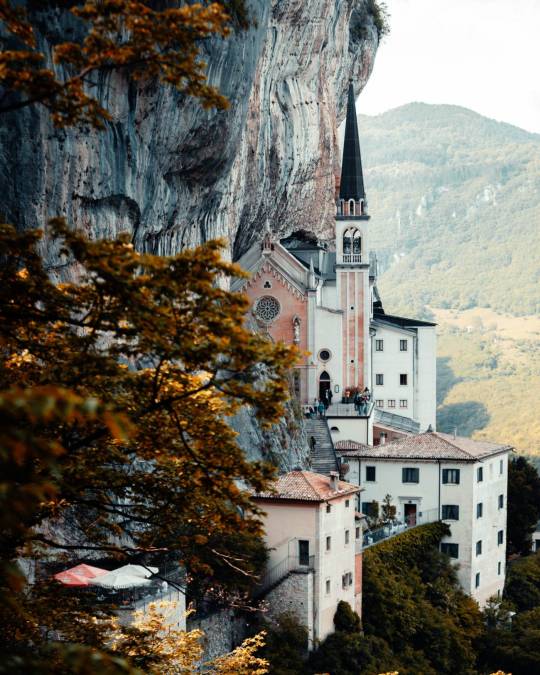









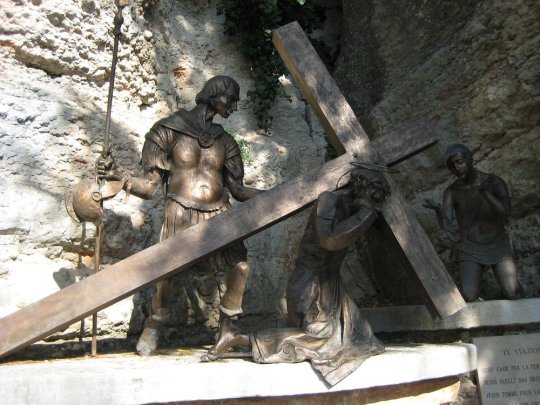



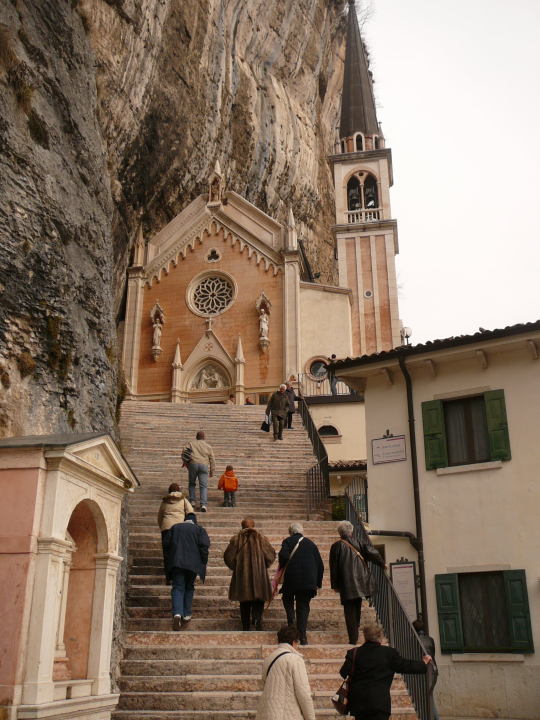
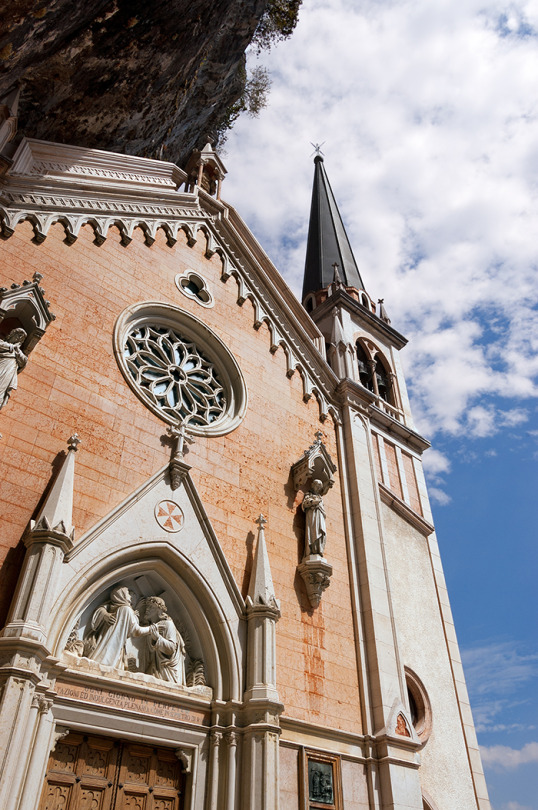




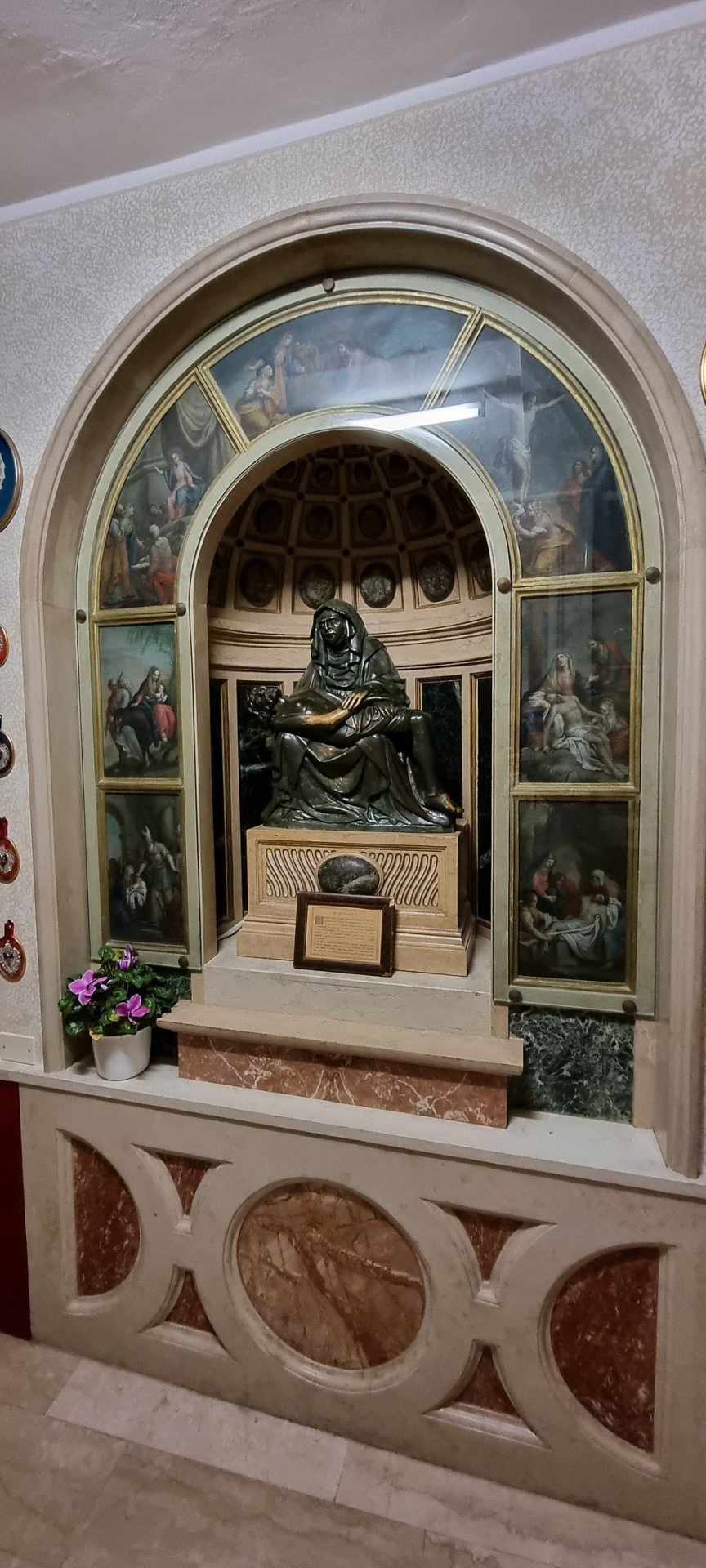



Святилище Богоматери Короны (Santuario Madonna della Corona).
Святилище Мадонны делла Корона находится в деревне Спьяцци, в провинции Верона. Этот церковный комплекс построен прямо в скальной стене горы Бальдо в Альпах, на высоте 774 метров над уровнем моря. Под ним расположена долина реки Адиже, а над ним возвышаются утес и бескрайнее небо.
Считается, что около 1000 года благочестивые отшельники, связанные с аббатством Святого Зено в Вероне, основали на горе Бальдо религиозное убежище. К XIII веку здесь уже существовал монастырь. По легенде, строительство святилища началось в 1522 году, когда статуя Мадонны чудесным образом была перенесена с острова Родос на это место «по воле ангелов» после захвата Родоса османск��ми войсками. В 1530 году на месте чуда была построена часовня, а через столетие — более крупная церковь. Последние значительные работы по реконструкции проходили в 1970-х годах под руководством архитектора Гвидо Тисато. Ранее, в XIX веке, святилище подверглось неоготической перестройке, но позднее его признали нестабильным. Сегодня оно полностью восстановлено и безопасно для посещения.
В средние века в монастырь снизу вела опасная горная тропа, и это был единственный путь. Впоследствии построили мосты, деревянные и каменные лестницы, затем — дорогу на горе, по которой теперь автобус доставляет людей. По лестнице паломники/пилигримы поднимаются до сих пор. Тропа «Путь Надежды» начинается от города Брентино Беллуно. Вверх через лес ведут 1500 ступенек. В среднем на такой подъем в монастырь пилигримы тратят 2 часа.
Кроме того, внутри здания находится Святая лестница (Scala Santa), считающаяся точной копией лестницы во дворец Пилата, по которо�� Иисус поднимался, чтобы услышать смертный приговор.
Sanctuary of Madonna della Corona (Santuario Madonna della Corona).
The Sanctuary of Madonna della Corona is located in the village of Spiazzi, in the province of Verona. This church complex is built directly into the rock wall of Mount Baldo in the Alps, at an altitude of 774 meters above sea level. Below it is the valley of the Adige River, and above it rises a cliff and an endless sky.
It is believed that around the year 1000, pious hermits associated with the Abbey of San Zeno in Verona founded a religious retreat on Mount Baldo. By the 13th century, a monastery already existed here. According to legend, the construction of the sanctuary began in 1522, when the statue of the Madonna was miraculously transferred from the island of Rhodes to this place “by the will of angels” after the capture of Rhodes by Ottoman troops. In 1530, a chapel was built on the site of the miracle, and a century later, a larger church. The last significant reconstruction work took place in the 1970s under the direction of the architect Guido Tisato. Earlier, in the 19th century, the sanctuary underwent a neo-Gothic reconstruction, but it was later recognized as unstable. Today, it is fully restored and safe to visit.
In the Middle Ages, a dangerous mountain path led from below to the monastery, and this was the only way. Later, bridges, wooden and stone stairs were built, then a road on the mountain, along which a bus now takes people. Pilgrims still climb the stairs. The "Way of Hope" trail starts from the town of Brentino Belluno. 1,500 steps lead up through the forest. On average, pilgrims spend 2 hours on this climb to the monastery.
Also inside the building is the Holy Stairs (Scala Santa), which is considered an exact replica of the stairs to Pilate's palace that Jesus climbed to hear his death sentence.
Источник://t.me/borderlesstravel, /lifeglobe.net/entry/14697, /a-lex-7.livejournal.com/626492.html, /tourweek.ru/blogs/3449989, /www.tripadvisor.ru/Attraction_Review-g1785335-d3246292-Reviews-Santuario_Basilica_Madonna_Della_Corona-Ferrara_di_ Monte_Baldo_Province_of_Veron.html.
#Италия#история#архитектура#готика#классицизм#Святилище Мадонны делла Корона#храм#алтарь#статуи#лесница#горы и лес#Альпы#Italy#history#Architecture#medieval#church#Gothic#Classicism#Sanctuary of the Madonna della Corona#altar#statues#staircase#Alps#mountains and forest
158 notes
·
View notes
Text
Dolomites, Italy: The Dolomites, also known as the Dolomite Mountains, Dolomite Alps or Dolomitic Alps, are a mountain range in northeastern Italy. They form part of the Southern Limestone Alps and extend from the River Adige in the west to the Piave Valley in the east. Wikipedia
242 notes
·
View notes
Text

The Dolomites also known as the Dolomite Mountains, Dolomite Alps or Dolomitic Alps, are a mountain range in northeastern Italy. They form part of the Southern Limestone Alps and extend from the River Adige in the west to the Piave Valley in the east. Wikipedia
77 notes
·
View notes
Photo

Santuario Basilica Madonna della Corona Ferrara di Monte Baldo Spiazzi, Italia photo by Volker
#madonna della corona#italy#italia#sanctuary of madonna della corona#the sanctuary of madonna della corona#2017#europe#mountains#clouds#mountain#church#sanctuary#monte baldo#architecture#adige river valley#basilica
15 notes
·
View notes
Text

Dolomites, Italy
They form part of the Southern Limestone Alps and extend from the River Adige in the west to the Piave Valley in the east.
54 notes
·
View notes
Text

The Italian Dolomites, also known as the Dolomite Mountains, or Dolomitic Alps, are a mountain range located in northeastern Italy. They form part of the Southern Limestone Alps and extend from the River Adige in the west to the Piave Valley in the east.
8 notes
·
View notes
Text
Following an advice given by my friend @flamaflavio I've decided to dedicate a series of posts on Northern Italy(because there's a serious lack of them in the fandom:(),whether they might be about culture,history,folklore,stereotypes(could be an interesting addition to characterization)or misconceptions*? Maybe even cuisine ahah
In this post I'll expain what we intend for North Italy, why it doesn't line up perfectly with canon and most importantly why Feli gets called "Italy" way more often than Mano.
Let's start by stating that in our country by North Italy we mean the regions of: Aosta Valley (Valle d'Aosta), Emilia-Romagna, Friuli-Venezia Giulia, Liguria(the region your girl's from), Lombardy(Lombardia), Piedmont (Piemonte), Veneto and Trentino Alto-Adige.

So you might ask me, why is it that in Hetalia Chibitalia has been shown as Florence as well??? Is it a mistake made by Hima?? Yes.. But actually no ahah! In this post I'll cover how we came to such a perception of the North in our country and why Tuscany and the rest of Central Italy, isn't included in it and doesn't consider themselves part of it :D
I won't talk about all history until nowadays of course (I'll definitely make future historical posts) I'll simply give you basic information based on early history to have an understanding of how us italians divide our country and why in canon other nations refer to Feliciano as Italy more commonly than they do with Romano(it is indeed based in history, it's not mean spirited!!).
So during the centuries prior to romanization North Italy was inhabited by a different bunch of cultures, among them the long haired Ligures(whose origin is unsure,Celtic?? Or simply celtified by their neighbors uhmm?? Talking about them in detail would take a whole ass post) the Veneti who were known for their commerce of amber and horse breeding, the Etruscans who, coming from Tuscany, colonised parts of the North and founded cities such as Bologna and in a later period a swarm of Gaulish tribes(generally referred to as the Celts).
The latter(most likely the Insubres) founded Milan in 590 BC, naming it Medhelan(the place in the middle of the plain, or among rivers) or Mediolanum as the Roman would call it later(Meśiolano as a Celtic engraving informs us) keep Milan in mind we'll come back to her later. Their domain extended from the Alps to the Adriatic sea.
This would be stopped by roman conquest that would culminate in 194 BC in the foundation of a province under the name of Gallia Cisalpina**,Cisalpine Gaul, id est Gaul on the hither side of the Alps(from the Romans point of view) that pretty much contained the regions which nowadays we consider North Italy.
The area became one of the most influential and rich provinces in the empire and it's strategic role is emphasized by the fact that in 286 the capital of the Western Roman Empire is moved from Rome to,guess where, Milan the main city in Gallia Cisalpina(and later on in Ravenna from 402 to the fall).
Is this why Grandpa is shown to leave poor Romano behind in canon in favour of his little brother??? Most likely!!! Btw if you're interested in the subject you should totally check out jjblue's Italia Annonaria (baby Feli) and Italia Suburbicaria (baby Mano) profiles on DA.
It's really unfair that the other characters call only Feliciano Italy:/ It's actually not true, as my friend flama has talked about in one her posts both Germany and America have called him Italy in the past. The fact that this behavior hurts Romano is long lasting misunderstanding in the fandom: he really doesn't care.
What annoys him it's that he's often referred to as "Italy's older brother" but not because he's Italy as well, but because that takes away his individuality: he's peeved by the fact he's only considered in relation to his brother, he's Romano besides being Feliciano's older brother ahah.
If his identity as Italy truly mattered to him he would have some kind of reaction out of being called Italy, especially by someone he has a bad relationship with like Germany, but he was left completely indifferent by that. I've often seen fanfictions where he's moved to tears by such action by it actually seems like he doesn't mind. He just wants people to understand he has a persona outside being Feli's big brother ahah.
There's actually a reason why Feli is "Italy" and it has been actually brought up recently in the fandom. Let's go back to history ahah.
A germanic general named Odoacer overthrew the last Roman Emperor, whose name for some reason I always found funnee, Romulus Augustulus.
Now the Eastern Roman Empire was having none of that and decided to invite Theodoric the Great of the Ostrogoths to rule over Italy under their approval(btw if you'll ever visit Ravenna do check out Sant'Apollinare Nuovo and Theodoric's Mausoleum). Ostrogothic rule was short lived (lasted pretty much Theodoric's reign) but greatly improved the economy and the arts. . . Too good to be true of course, because Justinian I(Eastern Roman emperor)decided he wanted to revive the glory ™ of the empire and this brings us to Gothic Wars.
Italy, especially the North, was left devastated by them, as they brought death(duh),poverty and were accompanied by a good dose of famine and plague. Byzantine rule wouldn't last long as a Germanic tribe***, the Lombards, took advantage of their weakness and took over italy and gave birth to a reign, which had Pavia as capital.
Said reign was called Langobardia, in particular North and Central Italy were named Langobardia Maior(The great Langobardia), which is the name under which North italy would be known as for a good part of the middle age and that gives the name to the modern region Milan and Pavia are located, Lombardia/Lombardy.
For example Boccaccio in his Decameron(in particular in the first novella) uses Lombards when referring to Italian merchants because that's the name they were given even if most of them came from Piedmont and Tuscany.
Lombard language and culture slowly was assimilated into the previous one and that can be seen in names, words and laws created in that period. This came to an end in 774 when Charles the Great, king of the Franks(and future Holy Roman Emperor), conquered Pavia and annexed the Lombard kingdom... Under the name of Kingdom of Italy!
So in other words the reason why our boy is the one who's called Italy the most is because he's simply been "Italy" for longer or more specifically for more than once(as I explain in the notes:)!!). Mano on the other hand would have most likely known as Kingdom of Sicily, Kingdom of Naples or Kingdom of the two Sicilies :). And I'm very much sure he would have been proud of such identity.
But what about central Italy??? You see the Papal States forged a document the Donation of Constantine, according to which Emperor Constantine assured Pope Silvester I(in 321) and his successors the exclusive domain over the city of Rome(btw Rome isn't part of southern Italy!!the fact South Italy is called Romano is really weird and so is North Italy as Veneziano ngl). This gave the Church access to "temporal power",id est material power and with it came territorial power. And so little by little (with the exception of Tuscany that flourished on it's own) it ate up the whole of Central Italy, which would develop a linguistic group, a culture and history of its own.
And that's pretty much what you need to know to understand Hetalia's confusing lore ahah. It's not everything I could go on explaining the era of the Commons and the Renaissance and go all through medieval and modern history to make you fully grasp it but I think it's enough for today:D let me know if you want me to talk about the subjects I mentioned in detail and if you want me to go on. Read the notes :)!!!
*I've often seen Feli wearing tarantella clothes, because it's probably assumed as the italian™ traditional dance and the music is misused in videos about Italy(all of Italy!!)when it's really characteristic of the South:)! Would be nice to see more fan arts of Mano in those garments lol really nice
**Napoleon would found in the 18th century the Cisalpine Republic in North Italy, a sister republic of France, that would later become known as the Italian Republic and then the (napoleonic!!!)Kingdom of Italy:) not to be confused with the Kingdom of Italy that would be born on the 17th of March 1861,ring a bell ahah???Read Hetalia's Risorgimento strips if you want to know about that:)))Milan djdbdb was once again the capital of all these.
***considering Romano is stated to have Arabic blood which is definitely brought by the moorish occupation, I'd assume Feli's Germanic one has to do with daddy Lombards. The longobards ruled over the South as well so ehhh, but hey it's Hima we're talking about. Genetics work in a weird way in hetalia, they're like acquired??? Hima explains that Canada, America and Seychelles don't have England's bushy eyebrows because of France's influence. Wtf. Oh btw if you might be interested in the Lombards' origin in Historia Langobardorum Paulus Diaconus informs us they came from Scania(a region in Sweden) and the settled in "Scoringa".
#I've been feeling down lately and needed a distraction#hope y'all will like it#in any case i enjoyed doing this :)#aph north italy#hws north italy#aph italy#hws italy#aph south italy#hws south italy
58 notes
·
View notes
Text
The Battle of Rivoli
The battle of Rivoli was regarded as one of Bonaparte’s most comprehensive early victories since, during the pursuit that followed the battle, a substantial proportion of the surviving Austrian army was captured. However, at one point the battle itself was “a near run thing” which had the potential to go badly for the French army. Bonaparte had 23000 men under his command whilst the Austrian army under Alvinczi consisted of 28000 men. The Austrians were committed to attack the French since the purpose of the engagement from their perspective was to effect the relief of the Siege of Mantua which had failed on three previous occasions.
As part of a two-pronged advance on Mantua, Alvinczi, in command of one element, advanced down the valley of the river Adige. First contact with Joubert’s small command forced the French to retreat. It was clear to Bonaparte that the main battle to decide the matter would be fought on the Rivoli plateau, the topography of which he was quite familiar. The typically complicated Austrian plan of attack consisted of six columns, which it was hoped would eventually envelop the French. On the left, one column under Vukassovich advanced down the left bank of the Adige. This column only managed to contribute some artillery fire to the battle.
Quasdavonich advanced down the Adige right bank with 9000 men consisting principally of cavalry and artillery. Three columns in the center under Libtay, Koblos and Ocksay advanced over rough mountain roads so had few artillery pieces. The right column under Lusignan was sent on an unsuccessful flanking movement intended to bring them to the French rear which failed to the extent that this force did not make a significant contribution to the battle since it did not arrive in position until the battle was effectively over.
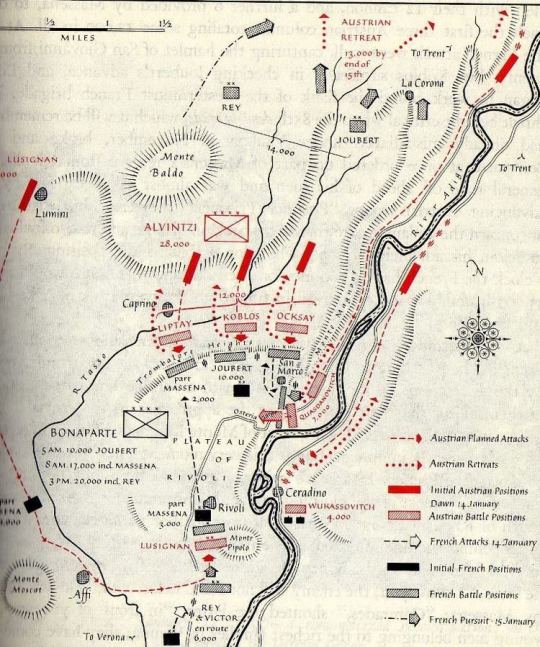
This simple description of the attack illuminates that the Austrians squandered their numerical advantage by breaking up the army into small units enabling them to be dealt with piecemeal by Bonaparte. The Austrian battle plan required each element to achieve its objective without compromise and thus work in concert with every other column effectively to achieve success. However, Bonaparte would have been in a perilous position had the battle gone against him given his retreat would have been blocked by this manoeuvre.
Whilst Austrian forces were advancing onto the plateau at the outset of the battle only Joubert’s 10000 men which were of course heavily outnumbered were in position to oppose the enemy which they did by focusing their fire on the centre columns. Other French columns were moving in towards the engagement and fortunately, Masséna’s division had by this point arrived on the field and its troops began to be incrementally filtered into the line. By 9.00 AM the Austrians had turned the French left flank, but Masséna’s arrival had managed to restore the situation.
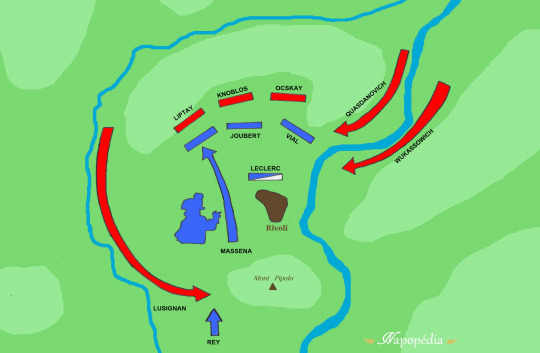
The Austrian column under General Quasdanovich, on the right flank with nine battalions of infantry and thirteen squadrons of cavalry, attempted to climb up from the valley floor of the Adige onto the plateau. This move then threatened the French right and centre so in response this column was raked with cannister from a battery of 15 cannons with devastating effect, followed briskly by an attack by Joubert’s light infantry, which concentrated on Quasdanovich’s right flank. Berthier’s cavalry then launched themselves into a highly effective counter-attack which forced the Austrians to retreat back up the Adige in chaos.
In this charge, Lasalle was first noticed (according to Thoumas whose reference was probably Thiers) for his ardour fighting beside Charles Leclerc. The impact of this charge threw the retreating Austrians into a panic as their escape route necessitated passing through the restriction of a narrow gorge. Fleeing Austrian dragoons collided with their own infantry and soon the gorge was a mass of tightly packed, completely disordered enemy troops with no thought but escape. Upon this wedge the French cavalry fell in fury. With just 26 men of the 22nd Chasseurs à Cheval Lasalle captured, it is said, an entire battalion of infantry and seized five enemy colours. Later in the day Lasalle led another charge, which added to his fame, at the head of a hundred or so hussars against the infantry of the Austrian General Ocksay upon the Trambasore Heights.
[..]
Napoleon in his Memoirs says concerning Berthier’s charge upon Quasdanovich’s column:
“The intrepidity of this charge decided upon success; the enemy was overthrown in the ravine; all that had debouched, infantry, cavalry, artillery, was taken.”
[..]
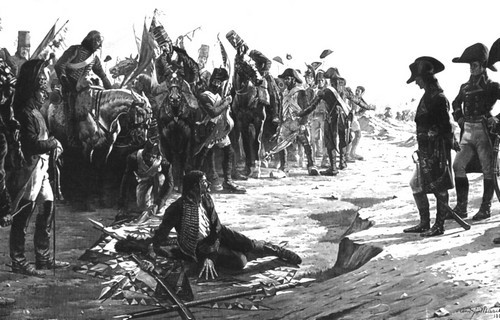
It is said that in the evening, Lasalle, pale and tired, stood before the général en chef beside the flags he had taken from the enemy. Bonaparte reportedly said to him on this occasion:
“Lie down on them, for you have well deserved it”.
Bonaparte had consistently proved his military genius since he had assumed command and by the time of the key victory of the battle of Rivoli, the Austrian army, from a strategic perspective, was all but conclusively beaten. The Austrians had been prevented from relieving the Siege of Mantua and the immediate outcome placed northern Italy in the hands of the French.
A few years afterward, in 1803, at a dinner given in Saint-Omer, the First Consul [..] said in front of all the officers of the division of Bourcier’s Dragoons:
“It is Masséna, Joubert, Lasalle, and I, who have won the battle of Rivoli.”
(General Roguet, Souvenir Militaires, tome 1).
John H. Lewis- Lasalle, the Hussar General.
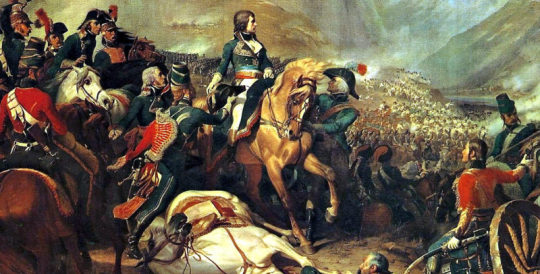
#napoleonic#john h. lewis#lasalle the hussar general#today in history#battle of rivoli#napoléon bonaparte#andré masséna#antoine de lasalle#barthélémy catherine joubert#louis alexandre berthier
22 notes
·
View notes
Photo

Looking for peace on the precipice
The Sanctuary of Madonna della Corona sits on an outcropping almost 2,500 feet high overlooking the Adige River Valley in northern Italy, near the city of Verona. Since the Middle Ages, this spot has been a destination for religious pilgrimages. The faithful are drawn no doubt by the views and, perhaps, the dangerous path to get there—enlightenment shouldn't come easy.
Over the centuries, the structure has evolved from a hermitage to a church, first inaugurated in 1530, and eventually to a sanctuary for contemplation and reflection. In the mid-1970s, architect Guido Tisato oversaw a major renovation, including digging out more of the mountain to add additional space. Today, visitors can reach the sanctuary from above via a paved path or from below, on a longer trail, known as the 'Path of Hope,' that ends with a steep staircase zigzagging upward. We think those who manage the climb up may be justified in feeling a little superior.
#barontravelllc#places#place#travelagents#travelagent#traveling#travel#madonnadellacorona#sanctuary#Italy#vacations#vacation#europe
16 notes
·
View notes
Text
21 Best Things to do in Trento and Trentino, Italy (Lakes, Mountains & Castles)
21 Best Things to do in Trento and Trentino, Italy (Lakes, Mountains & Castles)
Lying in a wide glacial valley on the Adige River in northern Italy, Trento is the capital of the region…

Quick Guide to Niagara Falls - New York State
Niagara Falls is one of the 20 waterfalls pointed out on my bucket list. You can check the other 19, here. You must visit Niagara Falls

The Ultimate Ubud Travel Guide - Where to Stay, Eat, and What to Do in Ubud Bali - JetsetChristina
Ubud is one of the most beautiful places to see in Bali. but where do you start with planning your trip to Ubud? Where do you stay in Ubud? What do you do in Ubud? Where do you eat in Ubud? That's what I'm here for. Here is your Ultimate Jetset Travel Guide to Ubud, Bali.

Travel | The Golden Girl | Jess Keys
Plan an unforgettable visit to Guatemala with our guide that covers 8 of the best places in Guatemala including cost, location & where to stay.

Hiking Guide - Havasu Falls | Arizona - Lovely and Limitless
This Hiking guide to Havasu Falls in Arizona includes how to get to Havasu Falls, as well as other waterfalls — Fifty Foot Falls and Little Najavo Falls.


Island Hopping Phi Phi Islands of Thailand - Travel Pockets
I thought the beaches of Florida and the Caribbean were beautiful but Phi Phi islands is on a whole another level. I couldn’t believe how gorgeous and clear the water was at these islands. It’s one of those locations you see on the Travel Channel or National Geographic magazines. It was just unreal.

16 of the Best Places to Visit in Italy
Here are the most beautiful places in Italy to add to your bucket list.

Exactly How To Get To Tumpak Sewu Waterfall in East Java (Photos, Maps and Essential Tips) - The Mandagies
This day couldn't get any more epic. After 7 hours in the car finally emerged at the roaring Tumpak Sewu - this trip was definitely one for the books!

Sunrise hike in Grand Canyon National Park
PHOTOS of what types of Grand Canyon scenic views you'll get with a hike into the inner canyon to ooh aah point PLUS further hiking options. ARIZONA national park vacation ideas

0 notes
Photo
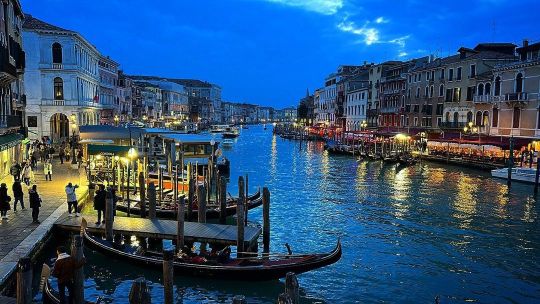
Italy 🇮🇹 A European country with a long Mediterranean coastline, has left a powerful mark on Western culture and cuisine. Its capital, Rome, is home to the Vatican as well as landmark art and ancient ruins. Other major cities include Florence, with Renaissance masterpieces such as Michelangelo’s "David" and Brunelleschi's Duomo; Venice, the city of canals; and Milan, Italy’s fashion capital. Venice, the capital of northern Italy’s Veneto region, is built on more than 100 small islands in a lagoon in the Adriatic Sea. It has no roads, just canals – including the Grand Canal thoroughfare – lined with Renaissance and Gothic palaces. The central square, Piazza San Marco, contains St. Mark’s Basilica, which is tiled with Byzantine mosaics, and the Campanile bell tower offering views of the city’s red roofs. The island of Murano is renowned for its long tradition of glass-making. Ferry-loads of visitors come to explore the Museo del Vetro, which tells the story of glass through the centuries, and to shop for locally crafted souvenirs. Built in the Romanesque style, the Church of Santa Maria and San Donato has a colorful mosaic floor and supposedly houses the bones of a slain dragon. Burano is an island in the Venetian Lagoon, northern Italy, near Torcello at the northern end of the lagoon, known for its lace work and brightly coloured homes. Dobbiaco Toblach is a comune in South Tyrol in northern Italy, located in the Puster Valley about 70 kilometres northeast of the city of Bolzano, on the border with Austria. The Dolomites, also known as the Dolomite Mountains, Dolomite Alps or Dolomitic Alps, are a mountain range in northeastern Italy. They form part of the Southern Limestone Alps and extend from the River Adige in the west to the Piave Valley in the east. The Pragser Wildsee, or Lake Prags, Lake Braies is a lake in the Prags Dolomites in South Tyrol, Italy. It belongs to the municipality of Prags which is located in the Prags Valley. (at Italy) https://www.instagram.com/p/CpouAvnDxhC/?igshid=NGJjMDIxMWI=
0 notes
Photo

The confluence of the valleys of Alpine rivers of Eisack and Adige marks the ancient strategic location of Bolzano. . . 🇮🇹 🚙🏛️ . . #travel #キャンプ #キャンパス #camping #motorhomelife #campinglife #camper #motorhoming #summer #italysummer #italy #dolomites #alps #mountains #tirol #sudtirol #bolzano #bozen #oldtown #streetscape #cityscape #イタリア #アルプス #建築 #river #valley #山 #川 #adige (at Bolzano) https://www.instagram.com/p/CocGGo3Iegg/?igshid=NGJjMDIxMWI=
#travel#キャンプ#キャンパス#camping#motorhomelife#campinglife#camper#motorhoming#summer#italysummer#italy#dolomites#alps#mountains#tirol#sudtirol#bolzano#bozen#oldtown#streetscape#cityscape#イタリア#アルプス#建築#river#valley#山#川#adige
0 notes
Note
1 13 and 28 for the nationality asks! :D
I honestly didn’t expect to write so much but here we are ahahah ^^’ Hope it’s a pleasant reading for you @tmakisamajiki!♡ *I’ll put it below ‘read more’ because it’s long*
“hi, I’m not from the US” ask set
1. Favourite place in your country?
A hard question! >.> I travelled a lot in my country and I love a lot of different places equally for different reasons. I don’t have one in particular so I’ll name some of the places where I left my heart ^^
Ischia and Capri, two of the islands in the Gulf of Naples: breath-taking panorama, crystal-clear sea, beautiful towns, friendly people and wonderful memories.
Venice (Venezia): apart from the sea and the famous canals, there are a lot of beautiful buildings and churches and you can easily see the centuries-old history of the city (and of Italy, in general) all around you. Then there’s the famous Carnival, which I saw two years ago (and I’ll see it again next year in February), and it’s like going back in time with all those beautiful masks and costumes and shows on the water. I’d suggest visiting it at night too, when the lights reflect on the water, it’s really suggestive! You’ll feel like a 1700/1800′s lady/gentleman going to a secret masquerade ball. Ah, and be sure to take a paper map with you (because apparently Google Maps doesn’t work in the heart of the city) or you’ll wander around in the dark like me searching for a bridge to cross to go back to the hotel (it was fun though).
Florence (Firenze): like Venice, it’s full of history and art. The city is beautiful but there are two things in particular that I like more than anything! The Cathedral of ‘Santa Maria del Fiore’ and the Uffizi Gallery. The first one is a masterpiece and the dome is very famous, you can visit it and, after going up through a lot of stairs, you can see all Florence from above. The latter is one of the biggest art museums in Italy and it has artworks and masterpieces from a lot of different centuries, but most of all from the Renaissance period. You can easily get lost because the museum is huge!
Last but not least, the ‘Riviera del Conero’, which is near the city where I was born and where I’ve lived for 18 years: it’s not a single place or city, but it’s a sum of places, towns and beaches on the coastline in front of the Adriatic Sea. There the blue sea meets a single green mountain and a lot of beautiful hills all around, with a lot of picturesque little towns - I really miss those panoramas. ^^
13. Does your country (or family) have any specific superstitions or traditions that might seem strange to outsiders?
Definitely! I know some of them but in general my family and I are not very superstitious. For example, if you let salt spill, you need to toss some of it behind you to avoid misfortune. Another one is that number 17 brings bad luck… and if something bad happens or if someone talks about hypothetical bad events, you’ll probably see Italians ‘fare le corna’ with their hand (literally ‘do the horns’, but you can also ‘toccare ferro’ - ‘touch iron’) to dispel bad vibes/avoid unlucky events etc.. If you want to wish good luck, you’ll probably hear a lot of ‘in bocca al lupo!’ (’into the wolf’s mouth!’)too and the one receiving it replying ‘crepi/crepi il lupo’ (’let the wolf die’). Another one that comes to my mind is the one that, at New Year’s Eve, you need to eat a lot of lentils to, hopefully, make a lot of money in the new year.
We have a lot of traditions too, and every city has its own - I’m not very well informed on the strange regional ones though! ^^’ The ones held everywhere and every year in Italy (and from what I know, not abroad) are, for example, the Carnival (usually in February) and ‘la Befana’ (on Epiphany’s Eve and on January 6). ‘La Befana’ is an old woman (a good witch) on a broom that brings sweets or gifts to good kids and coal to bad ones (nowadays the coal is a sweet too though, and your toungue becomes all black after eating it) and she usually puts them in a sock or shoe put out by kids.
28. Does your country have a lot of lakes, mountains, rivers? Do you have favourites?
Yes! Italy has so much variety in its landscapes! I visited Northern Italy, the Alps and the Apennines a lot of times and I must say there’s a particular alpin lake in Alto Adige (a region in Northern Italy) that still makes me go ‘wow’ everytime I visit it! It’s called Carezza Lake, it’s not very big but its peculiarity is in its colours and in the panorama ^^ It’s at the foot of the Dolomites surrounded by a green forest, and the lake itself is blue and green like a jewel - it’s also called the ‘Raibow Lake’ for its colours when the sun comes out 🌈
Speaking of mountains, it’s a must to name the Mont Blanc. I visited it on a summer holiday some years ago and I still remember the breath-taking view from the refuge near it. At more than 3.300m you could see everything in the valleys below and walk in the snow even on a sunny summer day! ❄️
Regarding rivers, there’s the river Po, Italy’s most important river… It’s really big and apart from the nice view when travelling on bridges, the true beauty is at the delta for its particular landscape and the variety of animals/plants connected to it! I visited it by boat when I was in middle school and it was a wonderful experience ✨
2 notes
·
View notes
Photo

📍Dolomiti. They form a part of the Southern Limestone Alps and extend from the River Adige in the west to the Piave Valley (Pieve di Cadore) in the east. ➖➖➖➖➖➖➖➖➖➖➖➖➖➖➖➖. . . . . #motorcycle #bikelife #motorbike #bike #biker #motorcycles #makelifearide #mountain #ride #vacation #instabike #photooftheday #travelholic #instamotorcycle #bikergang #travelingram #instamotogallery #travelblogger #dolomiti #bmwgs #bikestagram #moto #bmw #instago #bikers #instagood #travelgram #rideout #bikersofinstagram #igtravel ➖➖➖➖➖➖➖➖➖➖➖➖➖➖➖➖➖. @givibarcelona @bidisafe_alerta_medica @cuidomibarba @grupo.detector (en Cortina d'Ampezzo) https://www.instagram.com/p/BnDXyyQn_So/?utm_source=ig_tumblr_share&igshid=kak4xnnibgjc
#motorcycle#bikelife#motorbike#bike#biker#motorcycles#makelifearide#mountain#ride#vacation#instabike#photooftheday#travelholic#instamotorcycle#bikergang#travelingram#instamotogallery#travelblogger#dolomiti#bmwgs#bikestagram#moto#bmw#instago#bikers#instagood#travelgram#rideout#bikersofinstagram#igtravel
3 notes
·
View notes
Photo

The Dolomites, also known as the Dolomite Mountains, Dolomite Alps or Dolomitic Alps, are a mountain range located in northeastern Italy. They form part of the Southern Limestone Alps and extend from the River Adige in the west to the Piave Valley in the east.
The Dolomites are renowned for skiing in the winter months and mountain climbing, hiking, cycling, and BASE jumping, as well as paragliding and hang gliding in summer and late spring/early autumn.
1 note
·
View note